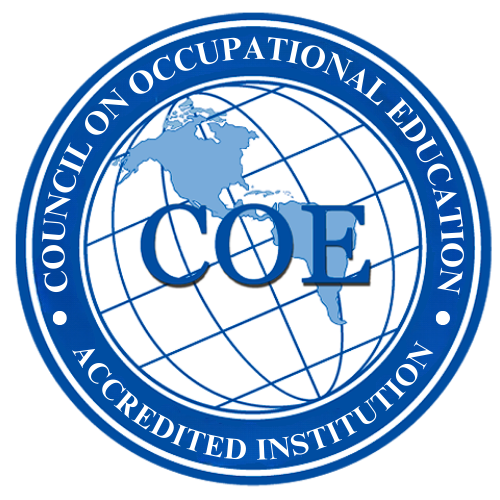The healthcare field offers various pathways for individuals seeking to make a difference in patient care and health services. Among these paths, the roles of the Patient Care Technician (PCT) and the Medical Assistant (MA) stand out as pivotal yet distinct professions. Both roles play integral parts in enhancing healthcare delivery, yet they differ substantially in their day-to-day responsibilities, required skills, work environments, and career prospects.
Understanding these differences is crucial for anyone considering a career in either profession, as it helps align personal goals with the appropriate career choice.
Overview of Medical Assistant (MA)
Medical Assistants (MAs) are versatile professionals who bridge the gap between administrative and clinical functions in healthcare facilities. Often regarded as the backbone in clinics and doctors’ offices, they balance a variety of tasks to ensure the smooth operation of medical practices.
MAs are responsible for taking patient histories, preparing patients for examination, assisting with examinations and procedures, scheduling appointments, and maintaining patient records. They also handle billing and coding for insurance purposes and manage other administrative tasks as required.
Overview of Patient Care Technician (PCT)
Patient Care Technicians (PCTs) focus more directly on patient care, usually in a hospital or long-term care setting. Their duties encompass providing essential care services such as taking vital signs, assisting patients with personal hygiene, mobility, and feeding, and collecting specimens for testing.
PCTs often work under the supervision of registered nurses and physicians, offering direct support in maintaining patient well-being. Due to their close interaction with patients, PCTs play a critical role in monitoring and reporting changes in patient conditions to the medical staff.
Job Responsibilities
The nature of work for both MAs and PCTs reflects their specific roles within the healthcare system. While Medical Assistants tend to focus on tasks that blend administrative duties with clinical work, Patient Care Technicians emphasize hands-on patient care.
Medical Assistants’ typical responsibilities include administrative tasks such as answering phones, scheduling appointments, updating patient records, and handling billing procedures. On the clinical side, they might assist physicians with examinations, administer injections or medications as permitted by state law, draw blood, and prepare examination rooms. The role of an MA is multifaceted, requiring a balanced aptitude for clinical proficiency and office management.
Conversely, PCTs engage more intensely in clinical activities related to direct patient care. Their duties may involve monitoring vital signs, assisting patients with activities of daily living (ADLs), performing bedside care and cleaning, and supporting medical and nursing staff during medical procedures. Additionally, PCTs may be involved in basic medical equipment maintenance and transporting patients within a healthcare facility.
Key Differences Between PCT and MA
Significant differences distinguish both professions, primarily centered on their focus, responsibilities, and work environment. Medical Assistants often work predominantly in outpatient settings such as clinics and physicians’ offices, where the pace is generally less intense compared to hospital settings. They have a distinct split between administrative and medical duties, requiring a strong proficiency in both areas.
In contrast, Patient Care Technicians operate primarily in inpatient environments like hospitals and nursing facilities. Their work is less administrative and more focused on providing direct patient care, making them invaluable in environments demanding constant patient observation and interaction.
Moreover, the training and certification paths differ. MAs generally undergo formal education through accredited programs that cover both administrative and clinical skills, often complemented by certification. PCTs also undergo training, particularly in patient care techniques, sometimes requiring certification in basic life support (BLS) and CPR which is less uniform than the education pathway for MAs.
Work Settings
Medical Assistants typically work in outpatient settings, including private practices, clinics, and specialty medical centers. Their work environment is usually more predictable regarding workflow, contributing to a relatively stable schedule. They may also find employment in hospitals, but their roles in such settings are often less prevalent than in clinics.
Patient Care Technicians, alternatively, enjoy a broader range of environments where they apply their skills, primarily in hospitals, rehabilitation centers, and long-term care facilities. These settings demand a high resilience to fast-paced, hands-on care requirements, often involving round-the-clock shifts.
Required Skills & Training
For individuals aspiring to become Medical Assistants, attention to detail, organizational skills, effective communication, and a fundamental understanding of medical terminologies are essential. Training programs typically span one to two years and offer certifications like the Certified Medical Assistant (CMA) or Registered Medical Assistant (RMA), which enhance employment prospects.
Patient Care Technicians require a robust set of interpersonal skills for patient interaction, thoroughness in recording patient data, and the physical stamina to perform demanding tasks. Their training often involves technical schools or community colleges offering nursing assistant programs, culminating in certifications such as CPR and first aid, essential for patient safety.
Salary & Career Growth
Both career paths offer entry into the healthcare field at foundational levels, but they differ in terms of salary and advancement opportunities. As of the latest statistics, Medical Assistants enjoy a slightly higher median wage compared to Patient Care Technicians due to their dual role in administrative and clinical functions. However, PCTs possess unique opportunities for advancement within patient care hierarchies, particularly if they opt to pursue nursing careers.
Career growth for Medical Assistants may include advancing to office manager roles or specializing in specific types of medical practices, while PCTs might develop further by acquiring additional certifications or pursuing higher education in nursing or related fields.
Key Factors to Consider When Choosing Between the Two Professions
Choosing between becoming a Medical Assistant or a Patient Care Technician requires careful consideration of several factors. Prospective candidates should evaluate their career goals, personal strengths, and the type of patient interactions they prefer.
Medical Assistants suited to balanced roles that include administrative tasks might thrive in outpatient settings. Meanwhile, individuals passionate about hands-on patient care and ready to embrace fast-paced, interactive environments may find the PCT role more fulfilling.
Which Career Path Is Right for You?
Ultimately, the right career path hinges on individual preferences and long-term objectives. Both professions offer the opportunity to play a critical role in patient care and healthcare delivery. Reflecting on your affinity towards administrative versus clinical tasks, your adaptability to diverse work environments, and your aspirations beyond the current role can guide your choice.
Conclusion
Whether opting for the role of a Medical Assistant or a Patient Care Technician, each path provides a foundational gateway into the healthcare industry, contributing significantly to patient care and the efficiency of healthcare systems.
Understanding the nuances between these roles empowers aspiring healthcare professionals to make informed decisions aligned with their skills, interests, and career goals. As the demand for healthcare services continues to grow, both professions offer promising avenues for meaningful and rewarding careers.


